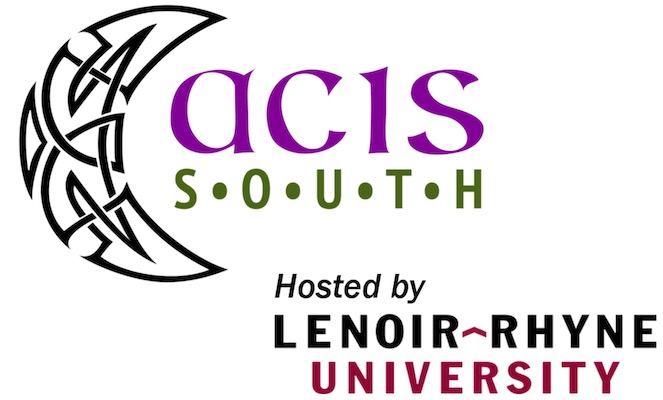Samantha Haddad
New York University
Samantha Haddad graduated from Mount Holyoke College in 2019 with a degree in History and Art History. She is currently pursuing her master’s at New York University in Irish and Irish American Studies where she researches the relationship between feminism, LGTBQ activism, and republicanism.
“Women’s Troubles”: Republican Women’s Abortion Experiences and Activism
Writing about the challenges of Northern Irish feminism in 1984, Nell McCafferty stated Northern Irish women had to “cop[e] with the womb and the border.” In writing this she identified the two most prominent issues of the decade: the politics of Irish women’s bodies and the ongoing body politic of the island of Ireland. The politics policing Irish women’s bodies resulted in a crisis of abortion healthcare access, a problem that deeply harmed the whole island of Ireland. The issue of the border, however, was felt more acutely in the North as that was the center of The Troubles (1969-1998). These converging issues shaped both Northern Irish women’s abortion experiences and activism. Previous scholarship on abortion in Ireland, however, has centered on the Republic of Ireland and has mostly analyzed the main flashpoints of the Irish abortion debate: the 1983 and 1992 abortion referendums. Analysis on how conflict shaped Northern Irish women’s encounters with abortion and their unique intersectional activism surrounding this access to healthcare, however, are absent in the literature. In addition to the legal barriers and social stigma faced in the Republic of Ireland, Northern Irish women’s abortion experiences were colored by the Troubles and distinct aspects of the conflict such as community and state surveillance, ethno-nationalist prejudice, and the prison struggle.
This paper, through a critical engagement with oral history, party documents, and underutilized ephemera material, seeks to show how the Troubles influenced republican women’s abortion experience in the North and how ideals of self-determination, republicanism, and the prison experience informed women’s activism surrounding abortion. By utilizing the malleable vocabulary and framework of the republican movement, women could adapt such language and ideology in use of women’s liberation, thus shining a spotlight not only on how the Troubles shaped women’s abortion experiences, but also the highly specific activism that emerged as a result of the conflict and the republican ideals embedded within it.
Bridget Keown
University of Pittsburg
Bridget Keown is a lecturer in the Gender, Sexuality, and Women’s Studies Program, and leading the interdisciplinary Gender and Science Program. She received her Phd in History from Northeastern University, and her research focuses on British and Irish women’s experiences of trauma during the First World War and Irish War of Independence.
“Leave all the dirty work to the women”: Gender, Trauma, and History in Aislinn Clarke’s The Devil’s Doorway
Clarke’s period found-footage horror film The Devil’s Doorway premiered on the same day that the Irish electorate voted to repeal the Eighth Amendment to the Irish Constitution, reforming abortion laws in the Republic of Ireland. A major aspect of both this film and the “Repeal the Eighth” campaign focused on the legacy of the Magdalene Laundries, where an estimated 30,000 women were confined over the course of the twentieth century. In the period since the film’s debut, public narratives and political discourse surrounding the laundries continue to uphold and validate the power of the state, the Catholic Church, and Irish nationalist patriarchy, while largely isolating and silencing the voices of women who endured life within the walls of the laundries themselves. Therefore, it falls to the realm of art to provide insight into the lived experiences of the laundry system. In my paper, I analyze Clarke’s film as a work of feminist discourse that, while employing tropes familiar to many horror films, also strategically engages with the history and memory of the laundry system, the institutions that permitted their brutality, and the traumatic memories they continue to inspire. My study of the film notes how the horror genre can serve as powerful corrective to patriarchal institutions of power and collective memory, while providing a space to question issues of generational and gendered trauma. Such work provides a corrective to the political discourse that continually seeks to forget the real horror of the laundry system and its legacy.
Jeanne Lakatos
Western Connecticut State University
Dr. Jeanne I. Lakatos teaches Writing, Linguistics, and Creative Process at Western Connecticut State University and English at Southern New Hampshire University. Her research focuses on sociolinguistics and her semiotic theory of iconic realism to cognition, artistic expression, and cultural awareness. She has national and international publications in these fields.
Sydney Owenson (Lady Morgan): A Nineteenth Century Advocate for Positive Change through Creative Vision
This paper will interweave my semiotic theory of iconic realism with the intellectual framework of the 19th century Irish author and poet, Sydney Owenson (Lady Morgan). Regarding creative expression, writers such as Sydney Owenson have had the opportunity to incorporate human experience in their art through multiple channels of sensory stimulation, tapping into the consciousness of humanity on multiple levels to help their communities recognize alternatives to established opinions. In her 1840 book, Woman and Her Master, Owenson makes the following observation: “As the acquirement of a physical elevation, in expanding the sphere of vision, and opening new and vast regions to the sense, obscures and diminishes the individual details comprehended in its grasp; so that intellectual and moral elevation, which has opened to the mind’s eye the wider fields of scientific research and of social combination, has caused the relative value of the smaller facts presented to its apprehension to be either overlooked, or mistaken.”
I will demonstrate how my semiotic theory of iconic realism applies to Owenson’s writings as a means to enlighten her readers to the possibilities of making positive change happen with their own lives and possibly those within their communities by linking the sensory paths of consciousness with appropriate and positive action.
